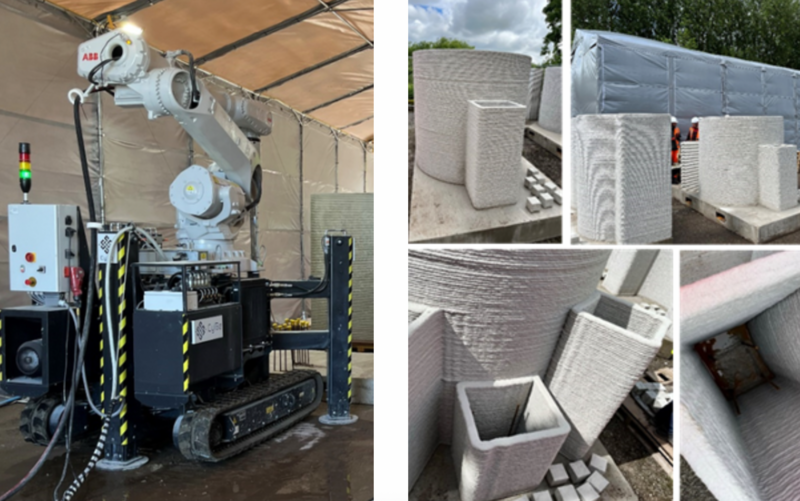Shaping the Future: 3D Printing in the UK Water Industry
Published on by Water Network Research, Official research team of The Water Network in Technology
Jacobs worked with United Utilities and its collaborators—ChangeMaker3D, Manchester Metropolitan University (PrintCity) and Scottish Water—on a £1.5 million ($1.9 million) Ofwat Innovation Fund project. Water Industry Printfrastructure™ (WIP) explored the potential of concrete and polymer 3D printing in the water sector.
 The WIP project demonstrated the feasibility of 3D printing infrastructure and operational components as an alternative to sourcing pre-cast or cast-in-place assets. United Utilities selected Jacobs to assess the commercial viability, carbon savings and societal benefits of using 3D-printed products compared with conventional benchmarks.
The WIP project demonstrated the feasibility of 3D printing infrastructure and operational components as an alternative to sourcing pre-cast or cast-in-place assets. United Utilities selected Jacobs to assess the commercial viability, carbon savings and societal benefits of using 3D-printed products compared with conventional benchmarks.
“The water industry requires unprecedented levels of construction to deliver environmental improvements and maintain aging assets. We must address these challenges sustainably, efficiently and at the lowest cost for our customers. Our WIP project will move 3D printing from a good idea into a valuable tool for our business.”
The challenge
The water industry faces a dual challenge: delivering environmental improvements while maintaining aging infrastructure. With increasing demand, population growth and ambitious climate goals, the sector is under pressure to evolve. Traditional construction and manufacturing methods are also strained by supply chain limitations. Against this backdrop, the industry must act quickly and cost-effectively within its largest-ever investment program.
The solution
3D printing offers the water sector a potentially transformative tool to improve efficiency, reduce carbon and meet regulatory goals. The WIP project evaluated a range of 3D printing technologies for concrete and polymer applications, including:
- Combined sewer overflow (CSO) chambers
- Industrial Emissions Discharge (IED) wall segments
- CCTV camera protective skid plates
- Water quality instrumentation reservoirs
- Jet nozzles for wastewater treatment systems
Jacobs focused on three core areas:
Commercial viability
Jacobs developed a commercialization plan to help transition 3D printing from innovation to real-world application. The plan included a strategic roadmap, legal and regulatory guidance, and a commercial model with funding strategies to support adoption across the sector.
Using pilot trial data, we conducted a cost-benefit analysis showing that 3D-printed concrete and polymer products can reduce costs, enhance service quality, reduce carbon and strengthen resilience across operations.
Whole life carbon assessment (WLCA)
A detailed WLCA was carried out, studying the carbon impacts for the products compared to their benchmarks from cradle to grave. The results indicated carbon savings for all printed polymer products (a water quality instrumentation reservoir, jet nozzle for wastewater treatment and CCTV camera protective skid plate) and two of the concrete products (the Industrial Emissions Directive Printed Wall and circular CSO chamber). Key reasons for carbon savings in the printed compared to benchmark products included less material leading to less embodied carbon, reduced energy in use and maintenance and extended design life.
Social value benefits
The project developed a social value strategy helping identify, deliver and capture wider societal benefits of 3D printed technology. During the pilot, the WIP teams engaged with 150+ young people through careers and skills development events, provided 52 weeks of apprenticeships and created 6 new jobs.
What is more, we helped assess and quantify some of the societal benefits of widespread application of 3D printing technologies in the U.K. water industry. Key potential benefits included job creation and opportunities to upskills and reskill people, improved working conditions through greater flexible working arrangements, and improved health and safety, supply chain resilience and economic, wellbeing and environmental benefits.
Attached link
https://www.jacobs.com/projects/shaping-future-3d-printing-uk-water-industryTaxonomy
- Industrial Water Treatment
- Industrial
- Industrial Water Treatment
- 3D Modeling
- United Kingdom